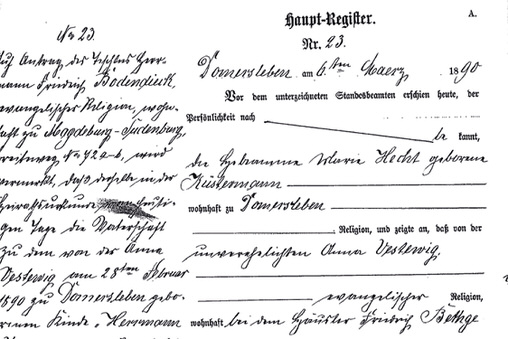How to Start Researching Your German Ancestors from the USA
Published by Gunar Bodendiek. Last updated on October 14, 2025.

If you’ve ever wondered where your German ancestors came from — the village they lived in, the church they attended, or the lives they led before emigrating — you’re not alone. Millions of Americans have German roots, and tracing those connections can be a deeply rewarding journey. The good news: with today’s online resources, you can start your research right from home.
1. Begin with What You Know
Start your search close to home. Gather as much information as possible from family records, photographs, letters, and oral history. Ask relatives for:
- Full names (including maiden names)
- Dates and places of birth, marriage, and death
- Immigration or naturalization details
Even small details like a family Bible note or an old address can become a vital clue later on.
2. Locate Immigration and Naturalization Records
If your ancestors came to the U.S. during the 19th or early 20th century, passenger lists and naturalization papers can reveal their last residence in Germany — often the key to finding their exact birthplace.
Recommended sources:
- Ancestry.com and FamilySearch.org for immigration and ship records
- National Archives (NARA) for naturalization records
- Local county courts or archives, especially if your ancestors settled in the Midwest or Pennsylvania
3. Identify the German Hometown
You’ll need the exact town name before research can continue in Germany. Many villages share similar names, so pinpointing the correct one is crucial. Naturalization papers, church records, or passenger lists may include this detail — sometimes under the heading “place of birth” or “last residence.”
If the name is hard to read or seems misspelled, compare it with modern maps or use the Meyers Gazetteer, a free online database of historical German place names.
4. Explore German Church and Civil Records
Once you know the hometown, you can dive into the rich genealogical sources from Germany:
- Church books (Kirchenbücher): Baptisms, marriages, and burials dating back to the 16th century
- Civil registers (Standesamt): Birth, marriage, and death records from about 1876 onward
- Local archives: Many records are held regionally, depending on historical state or religious affiliation
Online databases like Archion.de (for Protestant records) and Matricula-online.eu (for Catholic records) are valuable starting points.
5. Understand the Historical Context
Boundaries in German-speaking Europe changed frequently. Your ancestors might have lived in a region that was once part of Prussia, Silesia, or Austria. Historical maps and regional histories can help you understand these shifts and locate the right archives.
6. Translate and Interpret Old Records
Old German handwriting styles such as Kurrent or Sütterlin can be challenging to read, even for native speakers. Dates, occupations, and place names often appear in abbreviated or archaic forms. Don’t be discouraged — this is where experience truly matters.
Need Help Moving Forward?
If you’ve reached a dead end or simply want expert guidance, I can help. At My German Origin, I specialize in tracing German-speaking families from the USA back to their ancestral roots in Europe — using church books, archives, and historical databases.
I offer a free feasibility check to evaluate what records are available for your family and outline a custom research plan.
Contact me today to begin uncovering your family’s story in Germany.



